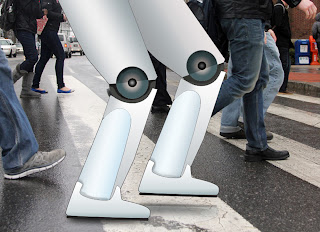The history of computer
revolutions will show a logical progression from the Mac to the iPad to
something like this SpaceTop 3D desktop. The Massachusetts Institute of
Technology researchers developed last year the ZeroN, a levitating 3D ball that
can record and replay how it is moved around by a user. Their latest environment
is a 3D computer interface that allows a user to ‘reach inside’ a computer
screen and grab web pages, documents, and videos like real-world objects. More
advanced tasks can be triggered with hand gestures. The system is powered by a
transparent LED display and a system of two cameras, one tracking the users’
gestures and the other watching her eyes to assess gaze and adjust the
perspective on the projection.

The SpaceTop weaves these two
threads together, joining 3-D interface with 3-D gesture controls, a smart
convergence that will likely become more common. SpaceTop and ZeroN, are part
of a broader shift toward interfaces we can grab with our hands. Humans seem to
prefer collaborating via physical interfaces; think of a scale model, map, or
whiteboard. People also like interacting in multiple modalities; think of
reading a book, underlining words and scribbling in the margins in pencil, and
taking separate notes on a pad. Humans seem to prefer collaborating via
physical interfaces; think of a scale model, map, or whiteboard. People also
like interacting in multiple modalities; think of reading a book, underlining
words and scribbling in the margins in pencil, and taking separate notes on a
pad.
More information:







